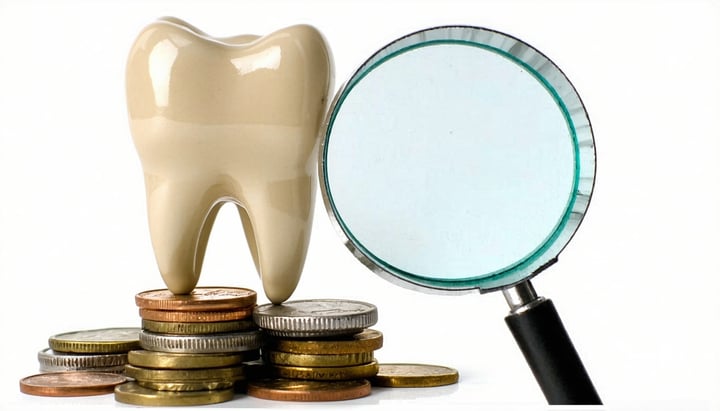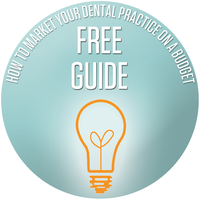
Running a dental office means more than just taking care of your patients’ oral health. It also means keeping your business strong and financially sound. One of the biggest parts of that is making sure dental insurance billing is done correctly.
Mistakes in billing can lead to denied dental claims, lost revenue, and frustrated patients. The good news? With a few simple, smart strategies, you can avoid these common pitfalls. In this article, we’ll walk through practical tips to help you bill with confidence and protect your bottom line.
Key Takeaways:
- Accurate billing matters: it can account for up to 50% of your practice’s revenue and prevent costly delays or denials.
- Double-check patient details like name, birthdate, and insurance ID to avoid simple but common dental billing mistakes.
- Understand each patient’s dental insurance plan to avoid coverage surprises and ensure proper documentation.
- Use correct CDT codes and keep them updated—coding errors are a leading cause of denied claims.
- Submit claims promptly (ideally within 24–48 hours) and track them to meet insurer deadlines.
- Train your team regularly to spot billing issues early and improve collections and compliance.

Why Dental Insurance Billing Matters
Dental billing and coding can make up 50% of a dental practice’s total revenue, so getting it right isn’t just helpful—it’s essential. When billing errors happen, they can lead to compliance issues, delayed payments, and hundreds of dollars in rework.
One study of over 58,000 dental claims found that 8.7% were diagnostic. The most common mistakes involved missed diagnoses and incomplete information. The good news? Most of these errors are completely preventable with the right systems and training in place.
Tip #1: Double-Check Patient Information
Before you send a claim, make sure all the patient’s details are correct:
- Full name (spelled right!)
- Date of birth
- Insurance ID number
- Policy holder’s name (if different)
Even small mistakes—like a wrong digit or missing name—can cause a claim to be denied. This is one of the most common dental insurance claim denial reasons.
☑️ Helpful Tool: Unitek College’s Step-by-Step Guide to Dental Billing includes a checklist for verifying patient information and insurance details.
Tip #2: Know the Insurance Plan
Not all dental insurance coverage is the same. Some cover two cleanings a year, while others only cover one. Some need pre-approval for certain treatments. Always check:
- What the plan covers
- If there’s a waiting period
- If x-rays or notes are needed
According to the National Association of Dental Plans, insurance rules are getting more complex, especially for non-DHMO plans. Knowing the details helps you avoid surprises and optimize your dental billing workflow.
Tip #3: Use the Right Codes
Dental procedures use special codes called CDT codes. This tells the insurance company what service you provide. Using the wrong code—or forgetting one—can lead to a denied claim. Make sure your team:
- Uses the latest CDT codes.
- Matches the code to the treatment.
- Adds any notes or documents needed.
80% of denied dental claims are due to coding errors and inaccuracies. So, this step is critical.
☑️ Helpful Tool: The ADA provides CDT Code Resources with updates and explanations for current dental procedure codes.
Tip #4: Send Claims Quickly
Most insurance companies require claims to be submitted within 90 to 180 days from the date of service. If you miss that window, the claim could be denied—and the patient may be left responsible for the full cost.
That’s why it’s important to stay on top of deadlines and follow a few simple steps to keep your dental insurance claim process on track:
- Submit claims within 24–48 hours of the visit.
- Use electronic billing (it’s faster!)
- Track claims to make sure they’re received.
Tip #5: Follow Up on Denied Claims
If a claim is denied, don’t give up. Find out why and fix the issue. Common reasons include:
- Wrong patient info
- Missing documents
- Incorrect codes
Once you fix the problem, you can resubmit the claim and still get paid. This is key to reducing dental claim delays and improving collections.
Tip #6: Train Your Team
Your front desk and billing staff are key to your success. Make sure they:
- Understand dental insurance basics
- Know how to check benefits
- Can spot common billing mistakes
Many dental practices, particularly small practices, struggle with low collections rates, leading to substantial revenue loss.
☑️ Helpful Tool: Unitek’s Guide also includes training tips for dental assistants and billing staff.
Tip #7: Keep Good Records
Always keep clear records of treatments, notes, and communications. If there’s ever a question about a claim, detailed records can help you prove what was done and why.
Dental billing compliance doesn’t have to be scary. With the right steps, you can avoid mistakes, get paid faster, and keep your patients smiling. Take time to train your team, check your work, and stay organized. Your practice and your bottom line will thank you!
Interested in joining the Solstice dental network?
Partner with a trusted leader in dental benefits and unlock access to thousands of potential patients. Our dedicated Provider Relations team is here to guide you every step of the way.
📞 Call us at 1.877.760.2247 (Option 2)
📧 Email: providerrelations@solsticebenefits.com



